Researchers have engineered nanosized cubes that spontaneously form a two-dimensional checkerboard pattern when dropped on the surface of water. The work, published in Nature Communications, presents a simple approach to create complex nanostructures through a technique called self-assembly.
Tag: Nanoengineering
Swimming microrobots deliver cancer-fighting drugs to metastatic lung tumors in mice
UC San Diego engineers have developed microscopic robots, known as microrobots, capable of swimming through the lungs to deliver cancer-fighting medication directly to metastatic tumors.
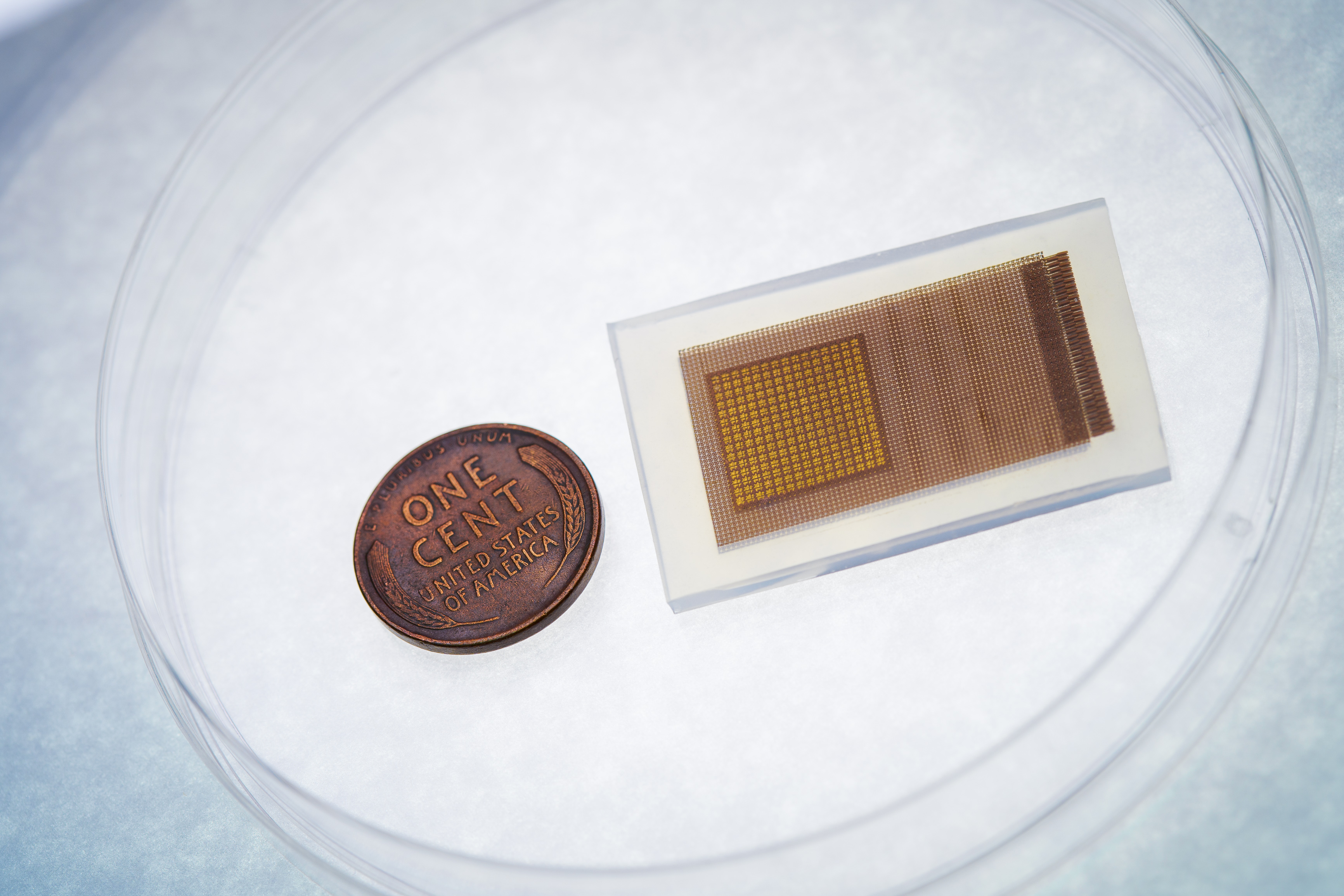
Wearable ultrasound patch enables continuous, non-invasive monitoring of cerebral blood flow
Engineers at the University of California San Diego have developed a wearable ultrasound patch that can offer continuous, non-invasive monitoring of blood flow in the brain. The soft and stretchy patch can be comfortably worn on the temple to provide three-dimensional data on cerebral blood flow—a first in wearable technology.
Plant virus treatment shows promise in fighting metastatic cancers in mice
An experimental treatment made from a plant virus is effective at protecting against a broad range of metastatic cancers in mice, shows a new study from the University of California San Diego.
Biodegradable ‘living plastic’ houses bacterial spores that help it break down
A new type of bioplastic could help reduce the plastic industry’s environmental footprint. Researchers have developed a biodegradable form of thermoplastic polyurethane (TPU) filled with bacterial spores that, when exposed to nutrients present in compost, germinate and break down the material at the end of its life cycle.
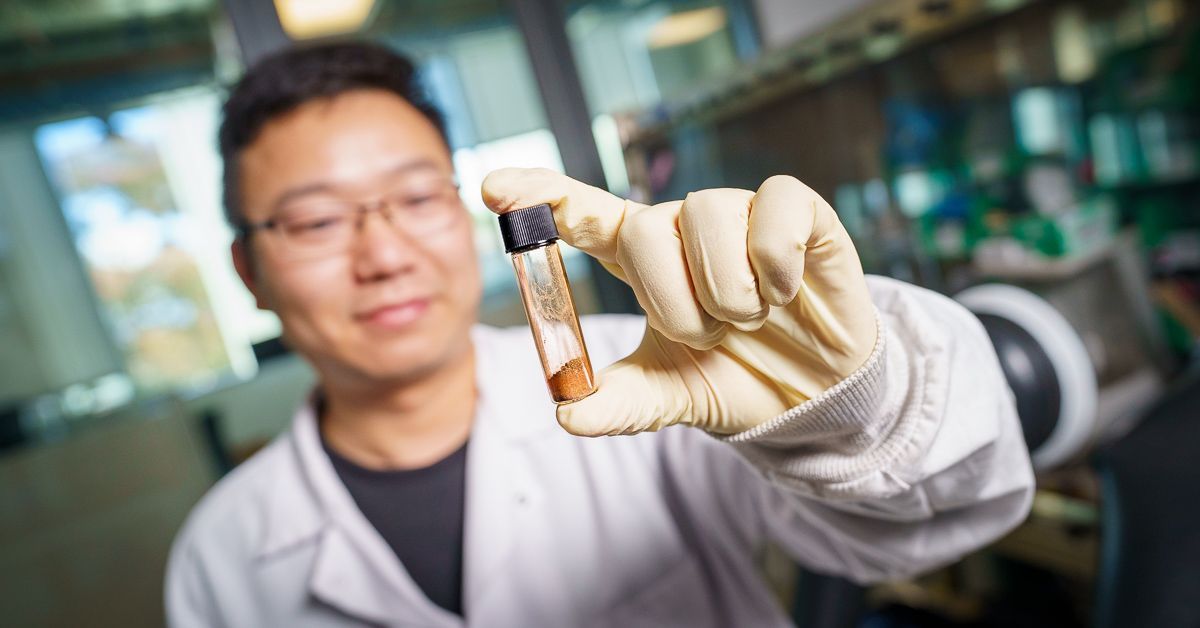
Healable Cathode Could Unlock Potential of Solid-state Lithium-sulfur Batteries
UC San Diego engineers developed a cathode material for lithium-sulfur (Li-S) batteries that is healable and highly conductive, overcoming longstanding challenges of traditional sulfur cathodes. The advance holds promise for bringing more energy dense and low-cost Li-S batteries closer to market.
‘Plug and play’ nanoparticles could make it easier to tackle various biological targets
UC San Diego engineers have developed modular nanoparticles that can be easily customized to target different biological entities such as tumors, viruses or toxins. The surface of the nanoparticles is engineered to host any biological molecules of choice, making it possible to tailor the nanoparticles for a wide array of applications, ranging from targeted drug delivery to neutralizing biological agents.
Nanoparticle vaccine could curb cancer metastasis to lungs by targeting a protein
UC San Diego engineers have developed an experimental vaccine that could prevent the spread of metastatic cancers to the lungs. Its success lies in targeting a protein known to play a central role in cancer growth and spread, rather than targeting the primary tumor itself.
Innovative Self-Powered Ingestible Sensor Opens New Avenues for Gut Research
Engineers developed a battery-free, pill-shaped ingestible biosensing system that gives scientists the ability to monitor gut metabolites in real time, which wasn’t possible before. The work could lead to a new understanding of intestinal metabolite composition, which significantly impacts human health.
Nanoengineers Develop a Predictive Database for Materials
Nanoengineers at the University of California San Diego’s Jacobs School of Engineering have developed an AI algorithm that predicts the structure and dynamic properties of any material—whether existing or new—almost instantaneously. Known as M3GNet, the algorithm was used to develop matterverse.ai, a database of more than 31 million yet-to-be-synthesized materials with properties predicted by machine learning algorithms. Matterverse.ai facilitates the discovery of new technological materials with exceptional properties.
These energy-packed batteries work well in extreme cold and heat
Researchers developed lithium-ion batteries that perform well at freezing cold and scorching hot temperatures, while packing a lot of energy. This could help electric cars travel farther on a single charge in the cold and reduce the need for cooling systems for the cars’ batteries in hot climates.
Story tips: Tailor-made molecules, better battery electrolytes, beyond Moore’s Law and improving climate model accuracy
ORNL Story tips: Tailor-made molecules, better battery electrolytes, beyond Moore’s Law and improving climate model accuracy
A new solid-state battery surprises the researchers who created it
Engineers created a new type of battery that weaves two promising battery sub-fields into a single battery. The battery uses both a solid state electrolyte and an all-silicon anode, making it a silicon all-solid-state battery. The initial rounds of tests show that the new battery is safe, long lasting, and energy dense. It holds promise for a wide range of applications from grid storage to electric vehicles.
A Wearable, Flexible Skin Patch (No Fingerstick) for Glucose Monitoring
A physician and nanoengineers at UC San Diego have successfully tested a noninvasive skin patch prototype that monitors blood glucose levels, a daily requirement for many persons with diabetes. The patch is thin, lightweight, easily applied and removed, and works…
How a plant virus could protect and save your lungs from metastatic cancer
Using a virus that grows in black-eyed pea plants, researchers developed a new therapy that could keep metastatic cancers from spreading to the lungs, as well as treat established tumors in the lungs.
These fridge-free COVID-19 vaccines are grown in plants and bacteria
Nanoengineers at the University of California San Diego have developed COVID-19 vaccine candidates that can take the heat. Their key ingredients? Viruses from plants or bacteria.
Soft skin patch could provide early warning for strokes, heart attacks
UC San Diego engineers developed a soft, stretchy ultrasound patch that can be worn on the skin to monitor blood flow through vessels deep inside the body. Such a device can make it easier to detect cardiovascular problems, like blockages in the arteries that could lead to strokes or heart attacks.
Calling all couch potatoes: this finger wrap can let you power electronics while you sleep
A new wearable device turns the touch of a finger into a source of power for small electronics and sensors. Engineers at the University of California San Diego developed a thin, flexible strip that can be worn on a fingertip and generate small amounts of electricity when a person’s finger sweats or presses on it. What’s special about this sweat-fueled device is that it generates power even while the wearer is asleep or sitting still.
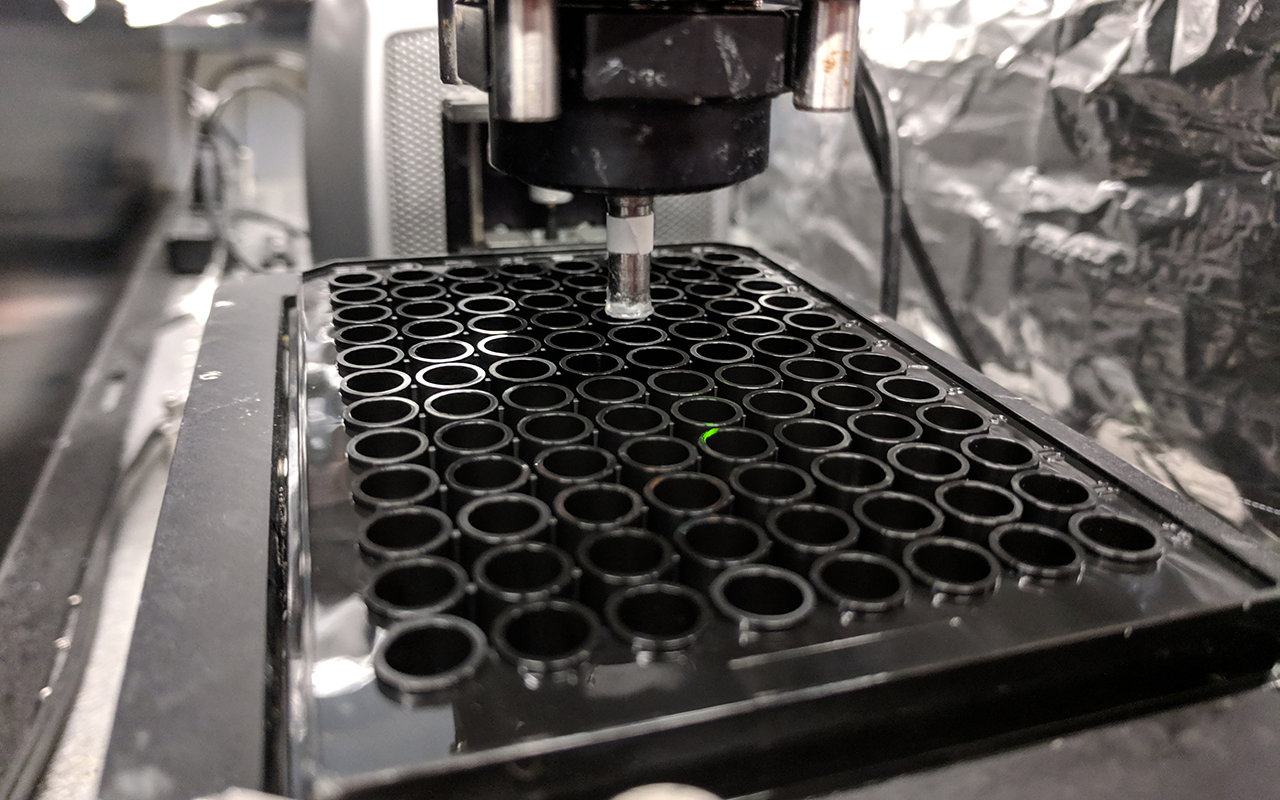
Super productive 3D bioprinter could help speed up drug development
A new 3D bioprinter developed by UC San Diego nanoengineers operates at record speed—it can print a 96-well array of living human tissue samples within 30 minutes. The technology could help accelerate high-throughput preclinical drug screening and make it less costly.
Weakness is strength for this low-temperature battery
Nanoengineers at the University of California San Diego have discovered new fundamental insights for developing lithium metal batteries that perform well at ultra-low temperatures; mainly, that the weaker the electrolyte holds on to lithium ions, the better. By using such a weakly binding electrolyte, the researchers developed a lithium metal battery that can be repeatedly recharged at temperatures as low as -60 degrees Celsius—a first in the field.
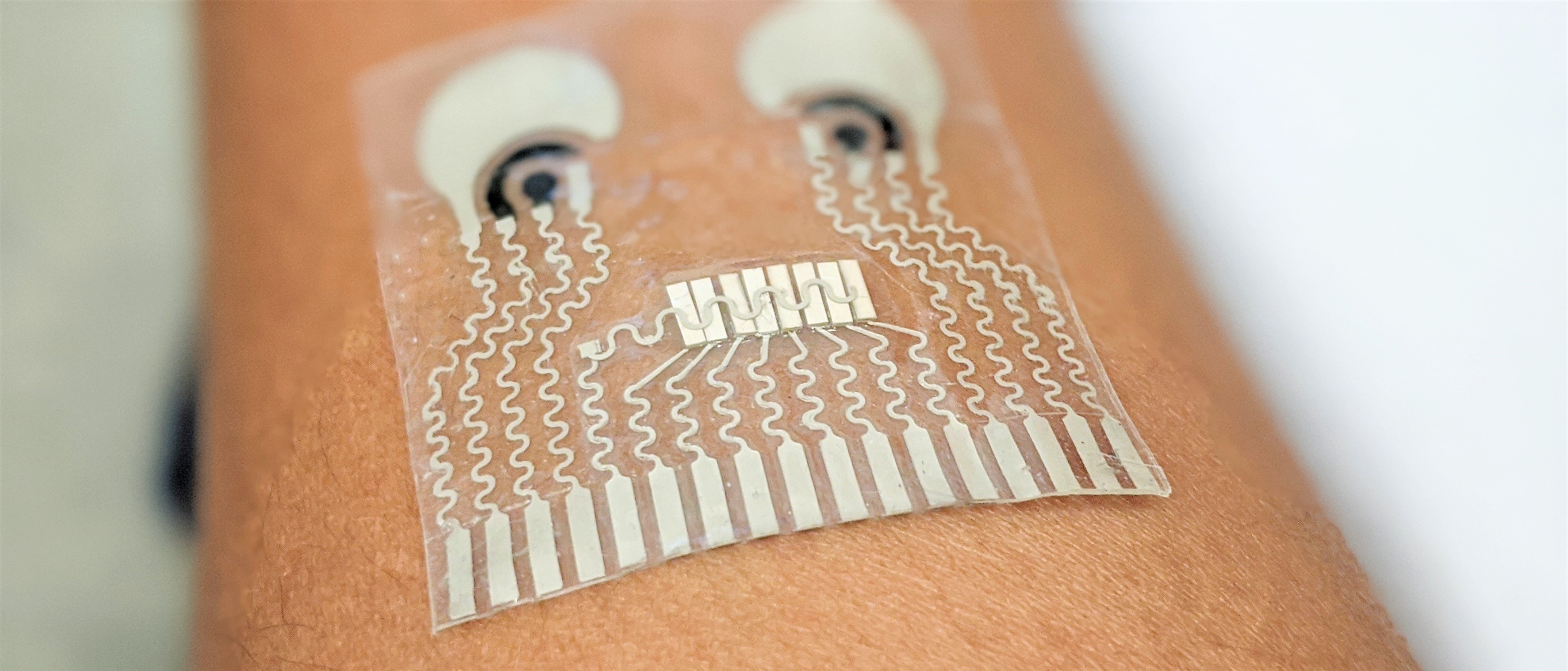
New skin patch brings us closer to wearable, all-in-one health monitor
Engineers at the University of California San Diego have developed a soft, stretchy skin patch that can be worn on the neck to continuously track blood pressure and heart rate while measuring the wearer’s levels of glucose as well as lactate, alcohol or caffeine. This one patch performs as well as commercial monitoring devices such as a blood pressure cuff, blood lactate meter, glucometer and breathalyzer.

A flexible screen-printed rechargeable battery with up to 10 times more power than state of the art
A team of researchers has developed a flexible, rechargeable silver oxide-zinc battery with a five to 10 times greater areal energy density than state of the art. The battery also is easier to manufacture; while most flexible batteries need to be manufactured in sterile conditions, under vacuum, this one can be screen printed in normal lab conditions. The device can be used in flexible, stretchable electronics for wearables as well as soft robotics.
Virus-like probes could help make rapid COVID-19 testing more accurate, reliable
Nanoengineers at the University of California San Diego have developed new and improved probes, known as positive controls, that could make it easier to validate rapid, point-of-care diagnostic tests for COVID-19 across the globe. The advance could help expand testing to low-resource, underserved areas.
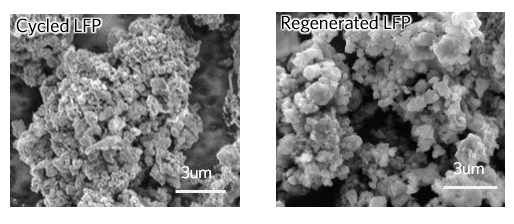
Environmentally friendly method could lower costs to recycle lithium-ion batteries
A new process for restoring spent cathodes to mint condition could make it more economical to recycle lithium-ion batteries. The process, developed by nanoengineers at the University of California San Diego, is more environmentally friendly than today’s methods; it uses greener ingredients, consumes 80 to 90% less energy, and emits about 75% less greenhouse gases.
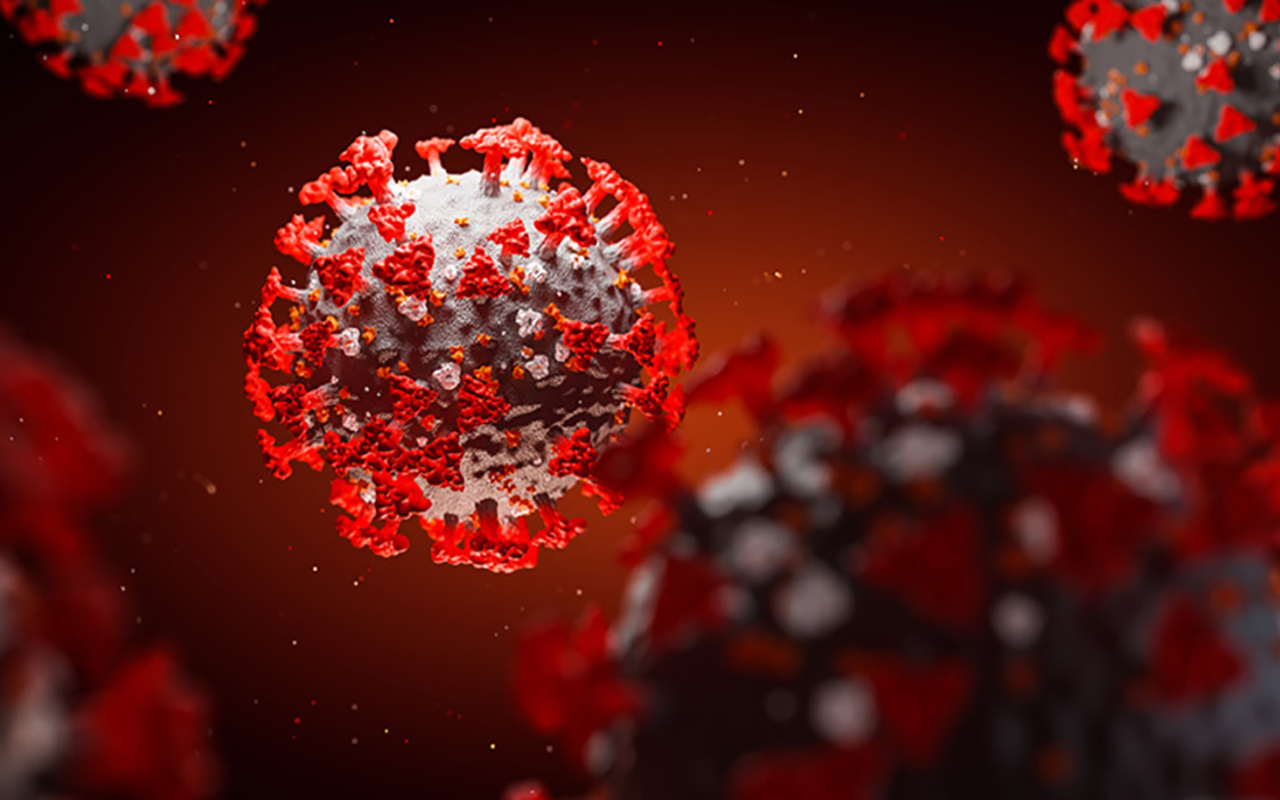
A Nanomaterial Path Forward for COVID-19 Vaccine Development
From mRNA vaccines entering clinical trials, to peptide-based vaccines and using molecular farming to scale vaccine production, the COVID-19 pandemic is pushing new and emerging nanotechnologies into the frontlines and the headlines.
Nanoengineers at UC San Diego detail the current approaches to COVID-19 vaccine development, and highlight how nanotechnology has enabled these advances, in a review article in Nature Nanotechnology published July 15.
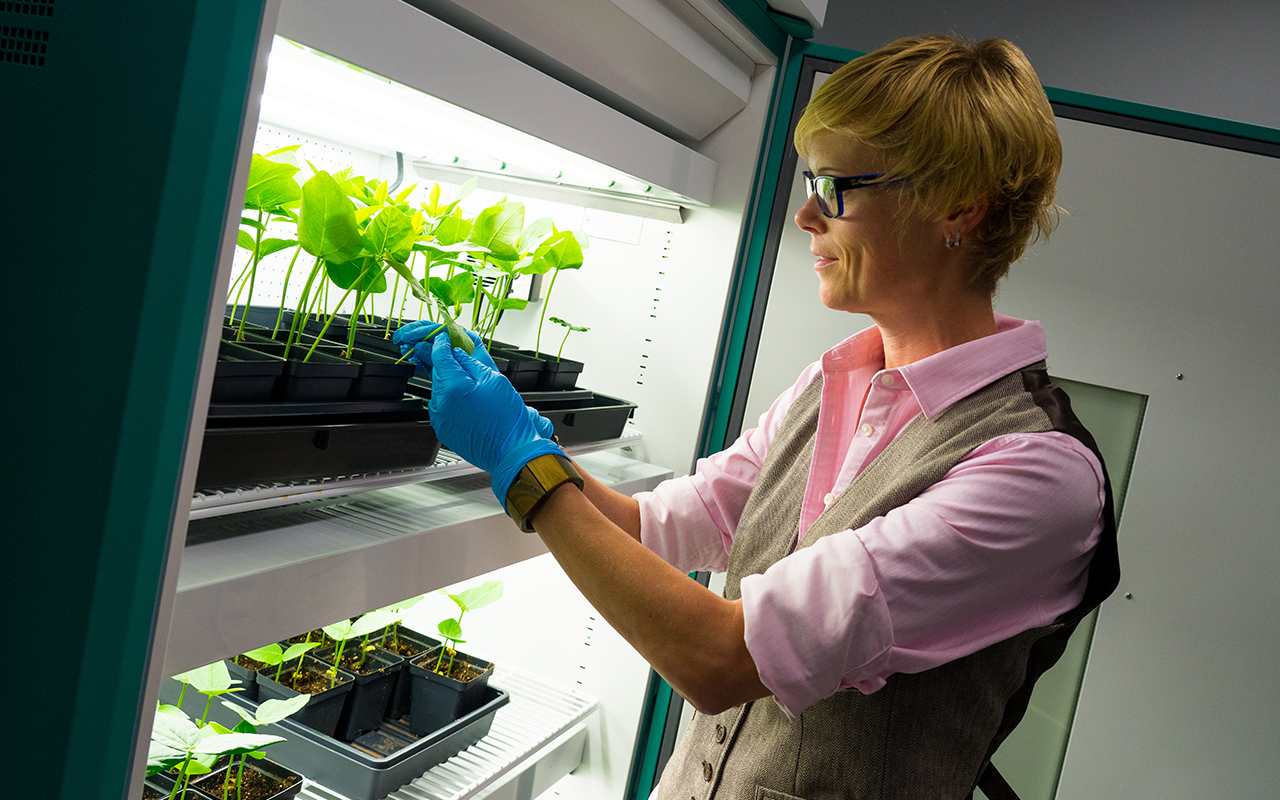
Marrying molecular farming and advanced manufacturing to develop a COVID-19 vaccine
UC San Diego nanoengineers received a Rapid Response Research (RAPID) grant from the National Science Foundation to develop—using a plant virus—a stable, easy to manufacture COVID-19 vaccine patch that can be shipped around the world and painlessly self-administered by patients.
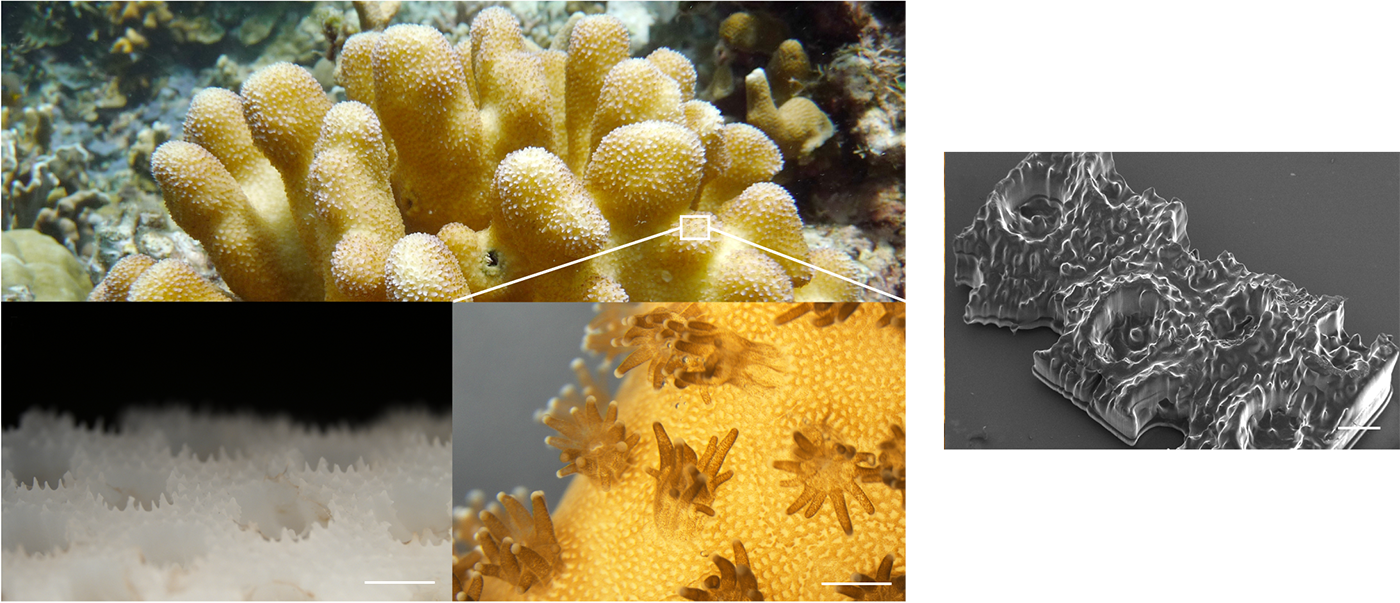
3D printed corals provide more fertile ground for algae growth
Researchers have 3D printed coral-inspired structures that are capable of growing dense populations of microscopic algae. The work could lead to the development of compact, more efficient bioreactors for producing algae-based biofuels, as well as new techniques to repair and restore coral reefs.
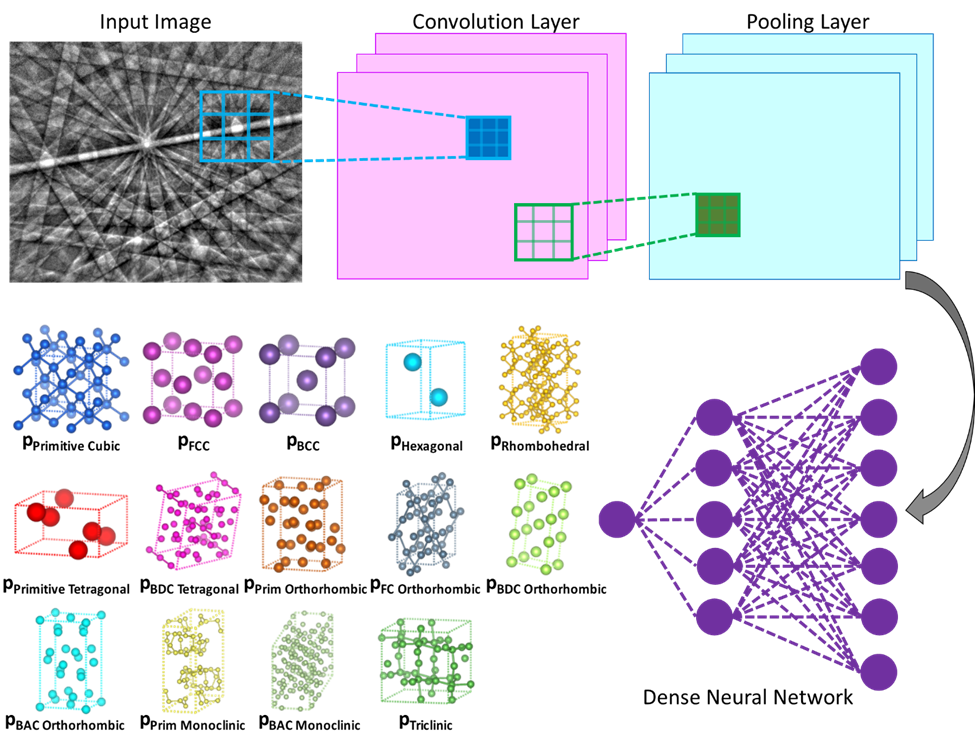
Machine learning technique speeds up crystal structure determination
A computer-based method could make it less labor-intensive to determine the crystal structures of various materials and molecules, including alloys, proteins and pharmaceuticals. The method uses a machine learning algorithm, similar to the type used in facial recognition and self-driving cars, to independently analyze electron diffraction patterns, and do so with at least 95% accuracy.
A new gene therapy strategy, courtesy of Mother Nature
Scientists have developed a new gene-therapy technique by transforming human cells into mass producers of tiny nano-sized particles full of genetic material that has the potential to reverse disease processes.